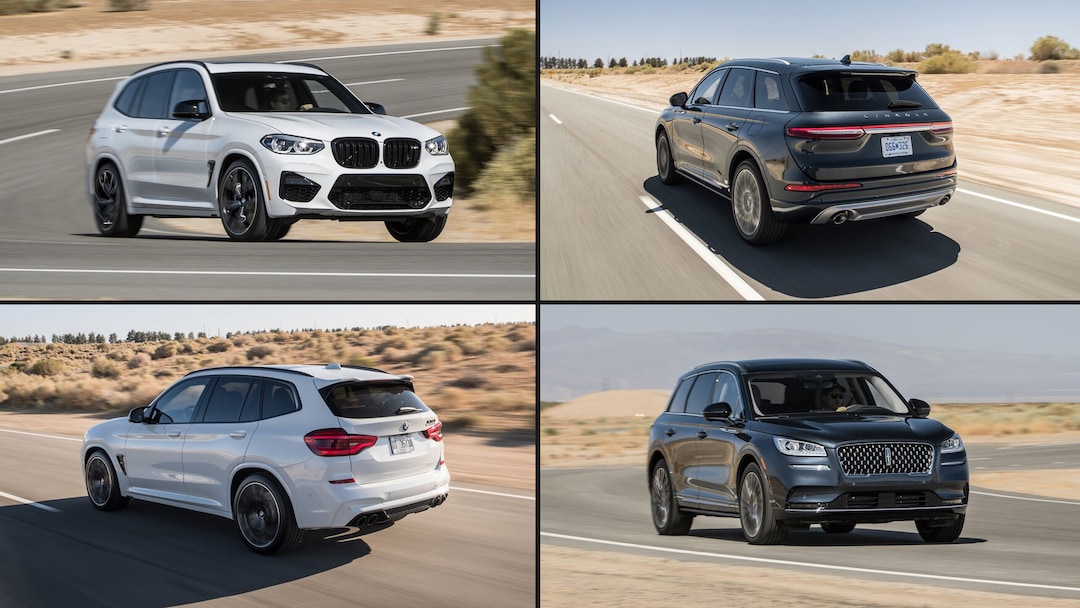BMW X3 vs Lincoln Corsair: A Comprehensive Comparison
Lincoln has been focusing on its SUV offerings, especially with the discontinuation of the MKZ sedan. The Corsair has become the entry point for Lincoln’s expanding SUV lineup and competes in the highly competitive compact luxury crossover market. This segment includes formidable competitors such as the Audi Q5, Mercedes-Benz GLC-Class, and the well-established BMW X3. In this article, we will explore how the Corsair measures up against the BMW X3.
Powertrain Details
The Lincoln Corsair offers two turbocharged four-cylinder engine options. The standard 2.0-liter engine generates a commendable 250 horsepower and 285 lb-ft of torque. Alternatively, consumers can opt for a more robust 2.3-liter engine, which boasts 295 horsepower and 310 lb-ft of torque. Both engines come with front-wheel drive as standard but can be upgraded to Lincoln’s Intelligent All-Wheel Drive system for enhanced performance.
In contrast, the BMW X3 employs a different strategy with its powertrains. The base model features a rear-wheel-drive configuration, with all-wheel drive available. The X3 also starts with a 2.0-liter turbocharged inline-four, producing 248 horsepower and 258 lb-ft of torque. For more power, the X3 M40i is available with a turbocharged 3.0-liter inline-six engine, delivering an impressive 355 horsepower and 369 lb-ft of torque, available solely with all-wheel drive.
Moreover, the X3 offers a plug-in hybrid variant (X3 XDrive 30e) that integrates an electric motor for increased efficiency, providing a total power output of 288 horsepower. Additionally, the high-performance X3 M models push the limits even further with up to 503 horsepower.
Cargo Space
When it comes to cargo capacity, the BMW X3 is slightly larger. It offers 28.7 cubic feet of space behind the rear seats and 62.7 cubic feet when the seats are folded down. In comparison, the Lincoln Corsair provides 25.2 cubic feet of cargo space with the rear seats raised, which expands to 53.1 cubic feet with them folded. However, despite the numerical advantage for the BMW, clever design in the Corsair allows for an additional two inches of legroom for rear passengers, making it a better choice for those who prioritize passenger comfort over cargo space.
The Luxury Factor
As luxury brands, both BMW and Lincoln offer superior features compared to more mainstream manufacturers. The Lincoln Corsair impresses with a panoramic roof that floods the cabin with light while featuring a sunshade to manage heat. Lincoln has made significant efforts to differentiate its offerings from its Ford counterparts, delivering a stylish and inviting interior layout. Additionally, Lincoln’s Co-Pilot 360 Plus package offers advanced safety technologies, enhancing the overall driving experience.
On the other hand, BMW opts for a more traditional and serious interior ambiance. The X3’s luxury is evident but presented in a more understated manner. Highlights include the Live Cockpit Pro, which features a fully digital instrument cluster that can be tailored to driver preferences. Furthermore, optional dynamic suspension allows for customizable ride comfort ranging from firm to plush, adding to the vehicle’s sporting character.
Pricing Comparison
Pricing often plays a critical role in vehicle selection. The Lincoln Corsair has a starting price of $37,585, while the base BMW X3 is priced higher at $42,945. As you add features and options, both vehicles can reach substantial price points. Notably, a well-equipped BMW can exceed $57,000, approaching the top-tier Corsair models that exceed $60,000. However, it’s worth noting that the Corsair offers less variability in pricing compared to the BMW X3, particularly regarding high-performance variants like the X3 M, which starts at $70,895.
In summary, whether one opts for the Lincoln Corsair or BMW X3 will depend heavily on individual preferences regarding luxury, power, and price. The Lincoln is ideal for buyers seeking comfort and ease, while the BMW attracts those looking for a sportier driving experience.




